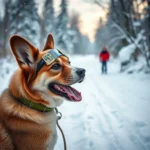
Introduction
Just like humans, dogs thrive when they are engaged in activities that stimulate their minds and bodies. Dog hobbies are more than just a way to pass the time; they play a crucial role in enhancing a dog’s physical and mental well-being. Hobbies provide essential outlets for energy and creativity, helping to reduce anxiety, prevent boredom, and strengthen the bond between dogs and their owners. In this article, we will explore various dog hobbies, their benefits, and how to choose the right activities for your furry friend. Whether you’re a new dog owner or a seasoned enthusiast, there’s something for everyone in the world of canine hobbies.
Understanding Dog Hobbies
Definition of Dog Hobbies
So, what exactly constitutes a hobby for dogs? Unlike basic needs such as walks, feeding, and grooming, dog hobbies encompass engaging activities that allow dogs to express their natural instincts, socialize, and learn new skills. Hobbies can range from physical activities like agility training to creative endeavors like photography or crafts. The key is that these pursuits are enjoyable for dogs and contribute to their overall happiness and fulfillment.
Benefits of Dog Hobbies
Engaging in dog hobbies has several benefits that can greatly enhance your dog’s quality of life:
- Physical health benefits: Regular activities help maintain a healthy weight, improve cardiovascular health, and strengthen muscles and joints.
- Mental stimulation: Hobbies can alleviate boredom and anxiety, making for a more well-rounded and happy canine.
- Strengthened bond: Participating in activities together fosters trust and companionship, deepening the relationship between you and your dog.
Types of Dog Hobbies
Active Hobbies
Active hobbies are ideal for energetic dogs that thrive on physical activity.
Agility Training
Agility training involves navigating a course filled with obstacles like jumps, tunnels, and weave poles. This sport enhances coordination and strengthens the bond between dog and owner.
Benefits: In addition to physical exercise, agility training improves mental focus and problem-solving skills.
Equipment Needed: Basic agility equipment can include jumps, tunnels, and weave poles, which can be purchased or DIY-ed at home.
Fetch and Retrieve Games
Fetch is a classic game that can be enjoyed in various forms. Whether it’s using a ball, frisbee, or even a stick, fetch provides an excellent workout.
Tips for Enhancing Playtime:
– Use different toys to keep your dog interested.
– Play in varying environments (park, beach, backyard) to add excitement.
– Incorporate commands to teach your dog to return the item to you.
Hiking and Outdoor Adventures
Exploring nature is not just enjoyable for you but also for your dog. Hiking provides a fantastic way to experience the outdoors together.
Best Practices:
– Start with shorter trails and gradually increase length based on your dog’s endurance.
– Bring plenty of water and snacks for both you and your dog.
– Always keep your dog on a leash and be mindful of wildlife.
Creative Hobbies
Creative hobbies allow for artistic expression and bonding with your dog.
Dog Photography
Capturing your dog’s personality through photography is a fun hobby that allows you to create lasting memories.
Tips for Taking Great Dog Photos:
– Use natural light for the best results.
– Experiment with different angles and perspectives.
– Capture candid moments during playtime or walks.
Creative Ideas for Themed Photoshoots: Consider seasonal themes, costumes, or even a day-in-the-life series to showcase your dog’s quirks.
DIY Dog Toys and Crafts
Making toys and crafts for your dog is a fulfilling way to engage creatively with your pet.
Simple Projects: You can create toys from old t-shirts, tennis balls, or even rope. There are plenty of online tutorials for making unique and safe toys.
Benefits of Engaging in Crafts with Dogs: Crafting can be a stress-reliever for owners and a fun way for dogs to receive new toys that are tailored to their interests.
Social Hobbies
Socializing is vital for a dog’s emotional health and can be a fun way to meet other dog lovers.
Dog Parks and Socialization
Visiting dog parks allows your pet to interact with other dogs in a controlled environment.
Importance of Socializing: Regular interaction with other dogs can help improve your dog’s behavior and reduce anxiety.
Etiquette and Safety Tips:
– Always supervise your dog.
– Ensure vaccinations are up-to-date.
– Be aware of your dog’s body language to prevent conflicts.
Canine Sports and Competitions
Canine sports such as flyball, dock diving, and herding are excellent ways to engage your dog in structured activities.
Overview of Popular Dog Sports: Each sport has its own unique challenges and benefits, catering to various breeds and energy levels.
How to Get Involved: Research local clubs or organizations that offer training and competitions in your area.
Choosing the Right Hobby for Your Dog
Assessing Your Dog’s Personality and Preferences
Understanding your dog’s unique personality is crucial in selecting the right hobby.
- Identifying Energy Levels: High-energy breeds may thrive in agility or fetch, while calmer dogs might prefer leisurely activities like photography or crafts.
- Observing Interests: Pay attention to what excites your dog during playtime to guide your choices.
Safety Considerations
Before diving into new activities, it’s essential to ensure your dog is healthy and fit for the chosen hobby.
- Health Checks: Consult your veterinarian to rule out any underlying conditions that could be exacerbated by physical activities.
- Common Hazards: Always be aware of your surroundings and potential risks, such as hot pavement or sharp objects.
Budgeting for Dog Hobbies
Engaging in dog hobbies doesn’t have to be expensive, but it’s wise to consider potential costs.
- Overview of Potential Costs: This may include equipment, training classes, and travel expenses.
- Tips for Budget-Friendly Hobby Ideas: Look for DIY projects, free local classes, or community events that allow for low-cost engagement.
How to Get Started with Dog Hobbies
Setting Goals for You and Your Dog
Establishing clear goals can help keep you and your dog motivated and focused.
- Importance of Setting Achievable Goals: Start small and gradually increase the complexity or intensity of activities.
- Examples of Goals: Short-term goals might include mastering a new trick, while long-term goals could involve participating in a competition.
Finding Resources and Classes
Local resources can provide valuable guidance and support for your dog hobby journey.
- Recommendations for Local Classes: Check community centers or pet stores for training classes.
- Online Resources: Numerous websites and forums offer tips and advice for dog enthusiasts.
Incorporating Hobbies into Daily Routine
To make dog hobbies a regular part of your life, establish a routine that feels manageable.
- Tips for Regular Engagement: Set aside specific days for activities or integrate them into daily walks.
- Suggestions for Short and Long Hobby Sessions: Mix quick play sessions with longer, more involved activities to maintain interest.
Success Stories and Testimonials
Real-Life Examples of Dogs and Their Hobbies
Many dogs have thrived through engaging in hobbies, leading to happier and healthier lives.
- Case Studies: For instance, a Labrador named Max excelled in agility training, overcoming his initial shyness and building confidence.
- Owner Testimonials: Many owners report improvements in their dog’s behavior and overall happiness after introducing new hobbies.
Encouraging Community Engagement
Engaging with other hobbyists can enhance the experience for both you and your dog.
- Suggestions for Local Events and Meet-ups: Look for dog-friendly gatherings or training workshops in your area.
- Importance of Sharing Experiences: Sharing stories and tips can foster a sense of community among dog owners.
Conclusion
Engaging in dog hobbies offers numerous benefits for both dogs and their owners, from physical health improvements to strengthened relationships. By exploring different activities and finding what resonates with your dog, you can create lasting memories and enrich your pet’s life. We encourage you to try various hobbies and discover the joy they can bring to both you and your canine companion. Share your experiences or favorite activities with fellow dog lovers, and let’s celebrate the wonderful world of dog hobbies together!
FAQs
Common Questions About Dog Hobbies and Their Benefits
-
What are the best hobbies for a high-energy dog?
High-energy dogs often enjoy agility training, fetch, and hiking. -
How can I tell if my dog is bored?
Signs of boredom can include destructive behavior, excessive barking, or a lack of interest in playtime. -
Are there hobbies suitable for older dogs?
Yes! Older dogs may benefit from gentle activities like leisurely walks, dog-friendly crafts, or low-impact training.
Quick Tips for New Dog Owners Regarding Hobbies
- Start small and gradually introduce new activities.
- Pay attention to your dog’s preferences and energy levels.
- Always prioritize safety and health when engaging in new hobbies.









